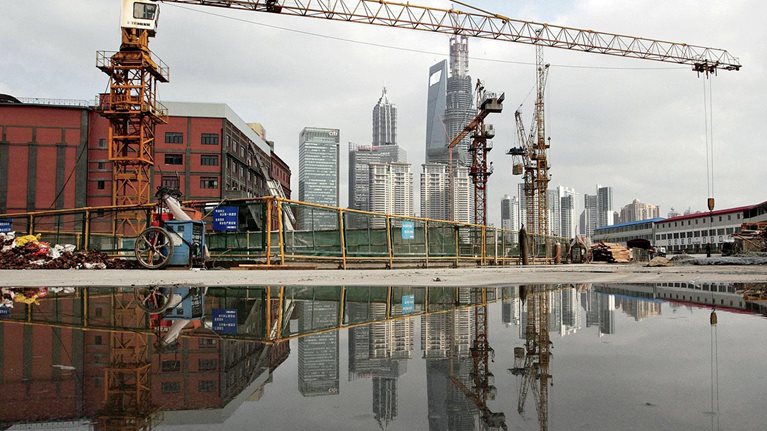Karl Kuchel is chief executive officer of Macquarie Infrastructure Partners, which manages more than $8 billion in US and Canadian infrastructure assets, including regulated utilities, toll roads, ports, renewable energy, midstream oil and gas, power, waste, and telecommunications. In this interview with McKinsey, Kuchel discusses the future of private investment in US infrastructure.
Stay current on your favorite topics
McKinsey: What are the barriers to increasing private investment in US infrastructure?
Karl Kuchel: In the United States, private-sector investors have invested significant capital in many infrastructure sectors, including energy (regulated utilities, power, midstream oil and gas, renewables), ports, rail, wireless towers, and fiber networks. These investments may be held via listed companies or unlisted vehicles. The primary consideration for these investments is generally whether they are able to deliver reasonable risk-adjusted returns.
There are a number of additional challenges for private capital looking to invest in US infrastructure, relating to toll roads, airports, and social infrastructure that traditionally have been developed, owned, and managed by the public sector. In many cases, there is political and public skepticism over public–private partnerships (PPPs), privatizations, or other innovative solutions involving the private sector. This can make it tough for governors or mayors to convince their constituencies of the merits of taking this route to deliver major infrastructure assets. Questions can arise regarding how the project will be operated, the level of risk-transfer benefits, and the profits that will be earned by the private sector. It is incumbent on the private sector to assist in educating politicians and the general public on these matters.
Also, in many cases, the lack of a systematic approach to procurement, negotiation, and implementation of potential transactions involving the public sector can increase execution risk and may reduce the private sector’s interest in a given project. These challenges are not new. There has been progress in addressing them over the last 10 to 15 years. The Trump administration’s focus on infrastructure investment could help to accelerate private participation in traditionally publicly owned infrastructure assets.
McKinsey: Interest rates have risen recently in the United States. How will that affect infrastructure pricing, development, and acquisitions?
Karl Kuchel: In general, the broad infrastructure asset class performs better on an absolute basis in a stable and improving macroeconomic environment. This is because the operating performance of many infrastructure assets is correlated with major macroeconomic trends. This can be due to revenue being linked to consumer-price-index escalators; regulation that allows higher costs to be passed on to customers; or simply from higher demand for the services provided. These higher earnings offset the debt service costs and required returns on equity associated with higher interest rates—and help to support asset valuations.
Higher interest rates will most adversely affect the valuation of infrastructure assets that have bond-like characteristics. These kinds of projects typically have very stable, low-growth cash flows. Given that these assets look like bonds, they should trade like bonds—that is, inversely with interest-rate expectations.
The public sector has missed an important opportunity to improve infrastructure through borrowing over the past five to seven years, when interest rates were at record lows. Higher interest rates, alongside current public-sector funding constraints, should help drive a greater degree of private-sector collaboration and more opportunities for infrastructure investment.
McKinsey: Will global currency volatility affect capital flows into infrastructure?
Karl Kuchel: Global capital flows into the infrastructure asset class have been robust over the past few years, with investors seeking assets that provide stable returns and long-term, dependable cash flows. Clearly that underlying investment performance can be materially influenced by currency volatility.
Infrastructure investors must consider the impact of currency when investing outside their home jurisdiction and consider using suitable hedging, either on an individual investment basis or across their entire investment portfolio.
We have seen this with recent US dollar strength and the impact it has had on the relative valuation of overseas infrastructure assets held by US investors on an unhedged basis. We also continue to see very strong interest from global investors in US infrastructure, as many are underweight and also because of the dollar’s role as the world’s primary reserve currency.
McKinsey: Are there new financing approaches that the United States should consider?
Karl Kuchel: Yes. One is a variation on Australia’s successful Asset Recycling Initiative, which provides incentive payments for state and local governments to fund infrastructure growth. In the United States, the federal government could offer state and local governments incentives to sell or lease their brownfield assets on the condition that the proceeds are reinvested in new infrastructure. This type of incentive would help politically “de-risk” public–private deals for state and local governments. The federal government could also expand the use and availability of private activity bonds for public projects.
The US has 31 large hub airports with a combined asset value worth billions of dollars. This untapped equity could be used by cities and states to fund other infrastructure needs. The US Federal Aviation Administration’s Airport Privatization Pilot Program and related tax provisions could be altered to encourage local officials to pursue these concession transactions.
Finally, as part of implementing its grant or incentive programs, the federal government should also encourage states to include PPPs in their approach to delivering infrastructure.
McKinsey: Where are the brightest prospects?
Karl Kuchel: In North America, energy infrastructure is likely to continue to provide the largest number of investment opportunities, by deal quantity and dollar value. This should include supply-related midstream assets as well as gas-fired power plants and renewables to replace the retirement of coal-fired power plants. Investors’ risk appetite will determine which opportunities within this sector are most attractive.
The sale of high-quality, low-risk infrastructure assets in the United States is expected to continue, although in some cases, considerations such as regulatory approvals will affect the level of competition for assets.
In general, for investors looking to build a diversified infrastructure portfolio, patience and discipline will be required to find projects across different sectors that meet their risk-return requirements.


